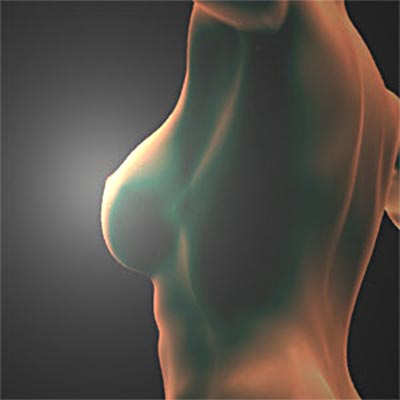Mastitis Symptom

Inflammation of the breast is called mastitis. When the condition is prevalent in lactating mothers it is called puerperal mastitis and in non-lactating people it is called non-puerperal mastitis. The inflammation includes enlargement/bulging, redness, tenderness and soreness of the breast.
The infection caused in the breast tissue leads to this condition. If you have suffered an episode of mastitis, you are more likely to encounter it again. Find out the typical symptoms of mastitis.
Symptoms of mastitis
Mastitis typically occurs only in one of the breasts and generally arises during the initial three months of postpartum, following the birth of baby. It can also occur suddenly or at anytime during the feeding of a baby. When the patient is suffering from mastitis the following symptoms are prominent:
- The breast is warm and tender to feel.
- Feeling of depression and sickness.
- Breast swells up.
- While feeding, there is soreness and burning in the breast.
- The skin gets reddish.
- Temperature soars up to or more than 101° F (38.3° C).
- Body ache, flu-like symptoms, shivering and chills, fatigue and racing heart rate.
Causes for mastitis
- Bacterial infection through the crack in the nipple skin or in the opening of the milk ducts in the nipple.
- Bacteria are produced on the skin of the breast and while the baby feeds, the bacteria increase as the baby's mouth enters the milk duct.
- This increase in the bacteria lends to the inflammation of the breast.
- Presence of Anemia
- Irritation caused by a tight ill-fitting nursing bra
- Staphylococcus Aureus or Staphylococcus Epidermidis bacteria
Treatment of mastitis
Mastitis is usually curable through a simple regime of treatment. The following treatment methods are adopted to cure mastitis:
- Antibiotics are prescribed for a period of two weeks and the medication needs to be continued even if the symptoms wane off.
- Warm compresses help and bring relief.
- Drinking plenty of fluids helps.
- Breast feeding should be continued even though the symptoms prevail because the rate of abscess formation
(an abscess is a pocket of pus) in the affected breast rises sharply when breast feeding is stopped. About 10%
of women with mastitis are likely to end up with an abscess within the infected breast which may require surgical intervention.
- Mastitis clears up with all this treatment, in rare cases if it doesn't then your doctor can look in if it is any other kind of malignity.
- Use a warm moist compress to decrease pain or swelling. Alternatively a warm shower before feeding can help.
- Ice packs may relieve discomfort and reduce swelling.
Prevention of mastitis
Mastitis can be prevented to a certain extent with the following steps:
- Drain off all the milk from your breast after breast feeding. You can ensure this by placing a warm, wet washcloth over the affected breast nearly 15 to 20 minutes before breast feeding. This aids increased flow of the milk during Breastfeeding.
- Empty one breast completely before shifting your baby to the next.
- If your baby feeds on only breast or partly on the second breast while feeding, start feeding from the unfed breast the next time you feed.
- Keep shifting feeding positions for each feed.
- Do not allow your baby to use your breast as a pacifier and just suck without drawing milk.
Top of the Page: Mastitis Symptom
Tags:#mastitis #mastitis symptom #mastitis treatment #breast mastitis #mastitis infection

Cancer Staging and Grading
Mammogram - Breast Xray
Breast Ultrasound
Breast MRI
Breast Augmentation
More on Breast cancer

Stress and Breast Cancer
Breast Density and Breast Cancer Risk
Lower your Breast Cancer Risk
Breast Cancer Myths
Mastitis
Breast Cancer Awareness
Preventing Breast Cancer
Breast Self Exam
Breast Cancer Chemotherapy Treatment
Palpable Breast Mass
Breast Cyst
Breast Cancer Symptoms
Breast Calcification
Breast Cancer Treatment
Mastectomy
Top of the Page: Mastitis Symptom
Popularity Index: 100,916

